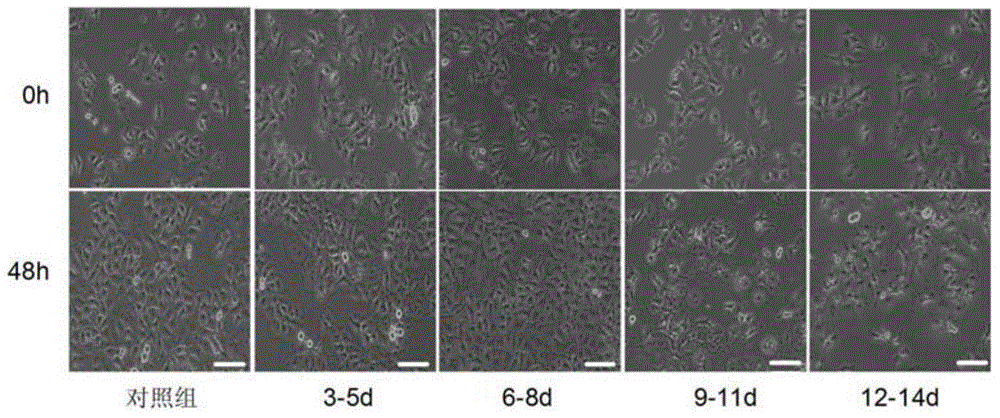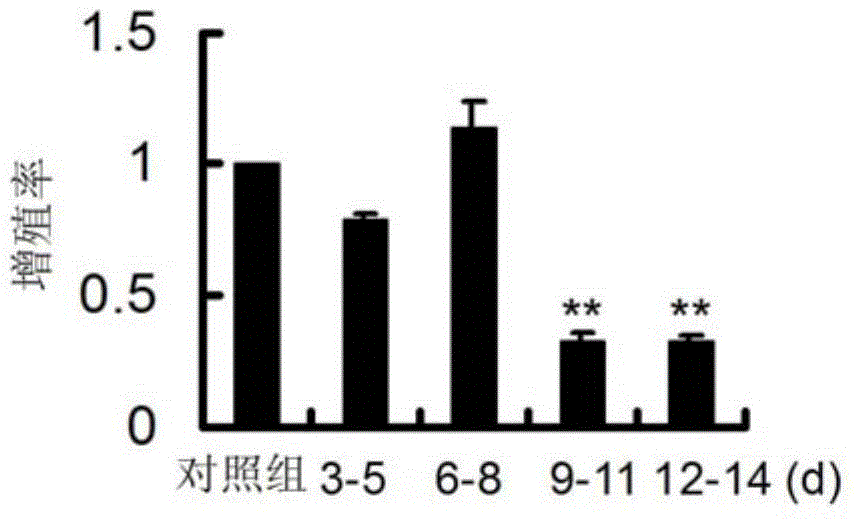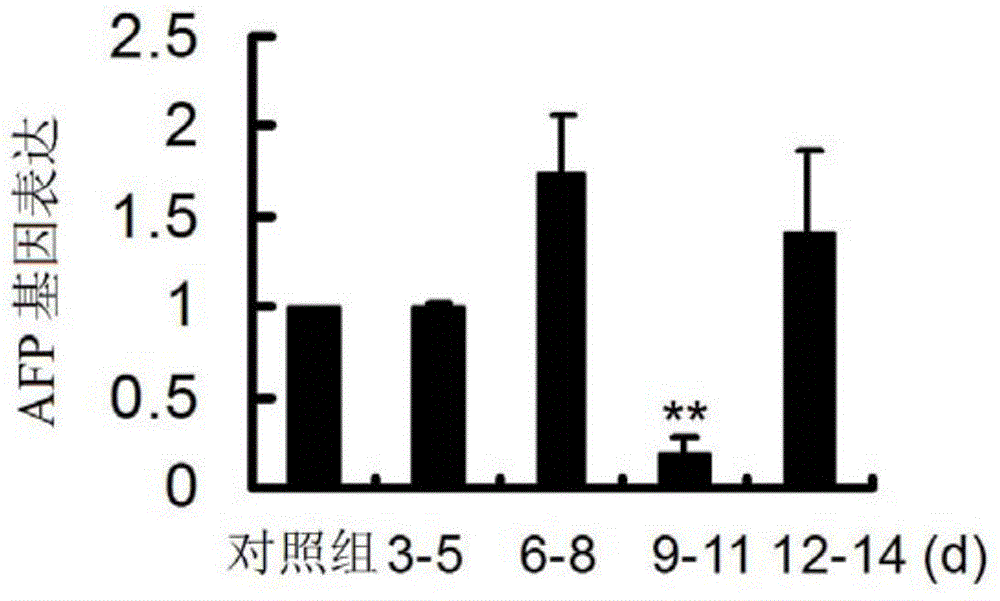New application of cells matched with tumor cell developmental stage and extract of cells
A technology for tumor cells and developmental stages, applied in antineoplastic drugs, drug combinations, pharmaceutical formulations, etc., can solve the problems that the common biological characteristics of cancer cells cannot be explained
- Summary
- Abstract
- Description
- Claims
- Application Information
AI Technical Summary
Problems solved by technology
Method used
Image
Examples
Embodiment 1
[0049] 9-11d chicken embryo liver extract can significantly inhibit the proliferation of HepG2
[0050] Under sterile conditions, take chicken embryos at different development stages and divide them into control group, 3-5d, 6-8d, 9-11d, 12-14d groups, add twice the volume of medium, and homogenize the embryos , after centrifugation, the supernatant was taken, passed through a 0.22 μm filter membrane, added to the HepG2 tumor cell culture medium (30% final concentration), and photographic observation and index detection were carried out after acting for different times.
[0051] The results showed that the proliferation of HepG2 cells in the 9-11d group and the cancer marker AFP were significantly inhibited with statistical significance (pfigure 1 , figure 2 , image 3 , Figure 7 )
Embodiment 2
[0053] 13.5-14.5d mouse embryonic liver co-culture can significantly inhibit the proliferation of HepG2
[0054] Under sterile conditions, mouse embryonic livers at different developmental stages were collected and divided into control group, 12.5d, 13.5d, 14.5d, 15.5d groups. After the primary cultured mouse embryonic liver cells were identified, they were co-cultured with liver cancer HepG2 cells. HepG2 cells (10 5 ) were grown on the bottom of a 6-well plate, embryonic liver cells (10 7 ) were co-cultured in the Transwell chamber. After co-cultivation for different periods of time, photographic observation and indicator detection were carried out.
[0055] The results showed that most HepG2 cells in the 13.5-14.5d group became round, shrunken and floated, while only a small part of adherent cells. In the 13.5-14.5d group, the proliferation rate of HepG2 and the cancer marker AFP were significantly inhibited, with statistical significance (p Figure 4 , Figure 5 , Ima...
Embodiment 3
[0057] Embryonic liver cells or their extracts promote the maturation of HepG2
[0058] The experimental treatment of chicken embryo fluid was the same as in Example 1, and the experimental treatment of mouse embryonic liver cells was the same as in Example 2. After 48 hours, Real time PCR was used to detect the gene expression of liver cancer proliferation marker gene Myc and liver cell differentiation marker gene HNF-4α.
[0059] The results showed that in the 9-11d chicken embryo fluid group and the 13.5-14.5d mouse embryonic liver cell co-culture group, the expression of Myc gene was significantly inhibited, while the expression of HNF-4α gene was significantly increased, which was statistically significant (p Figure 8 with Figure 9)
PUM
 Login to View More
Login to View More Abstract
Description
Claims
Application Information
 Login to View More
Login to View More - R&D
- Intellectual Property
- Life Sciences
- Materials
- Tech Scout
- Unparalleled Data Quality
- Higher Quality Content
- 60% Fewer Hallucinations
Browse by: Latest US Patents, China's latest patents, Technical Efficacy Thesaurus, Application Domain, Technology Topic, Popular Technical Reports.
© 2025 PatSnap. All rights reserved.Legal|Privacy policy|Modern Slavery Act Transparency Statement|Sitemap|About US| Contact US: help@patsnap.com



